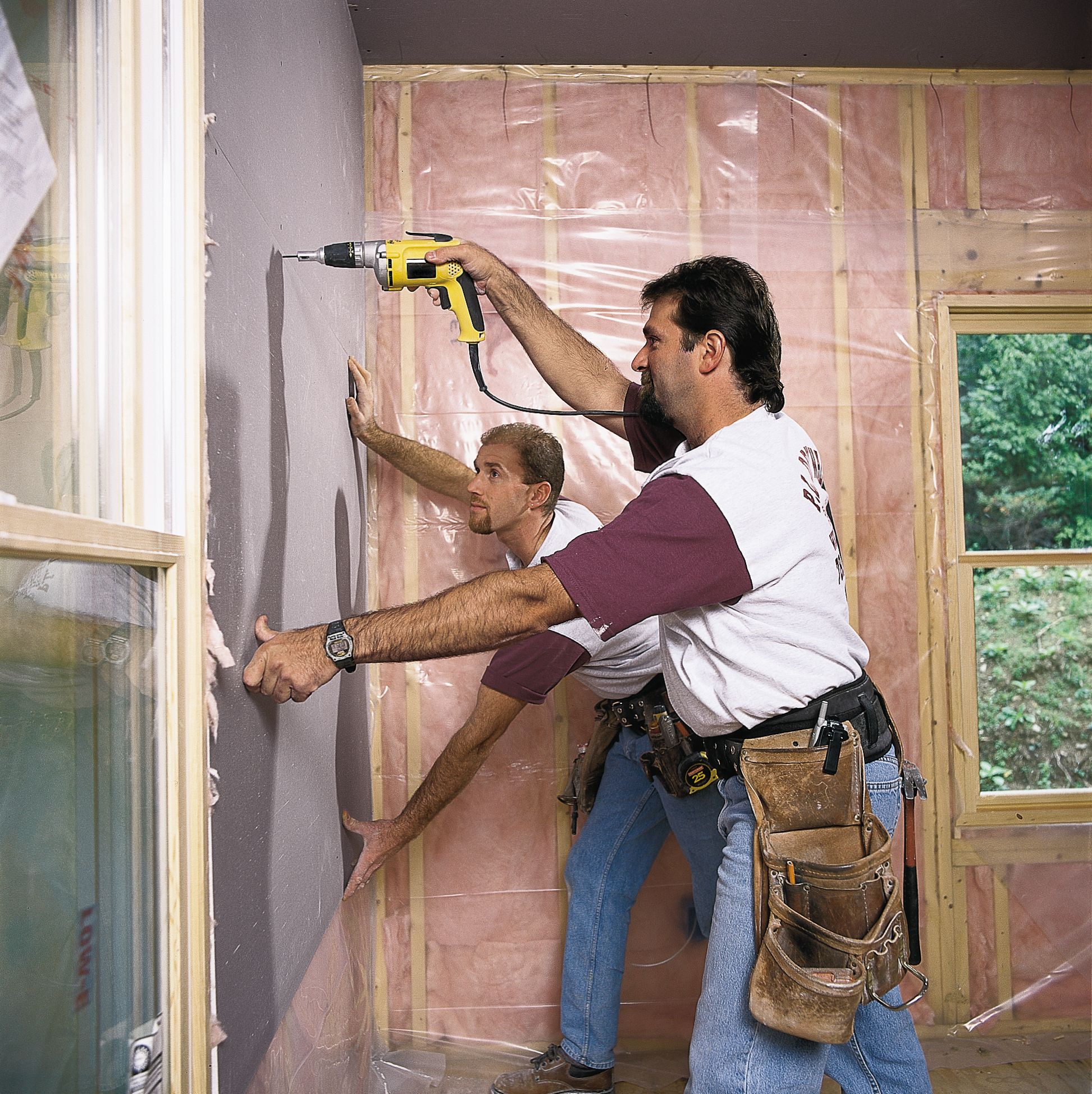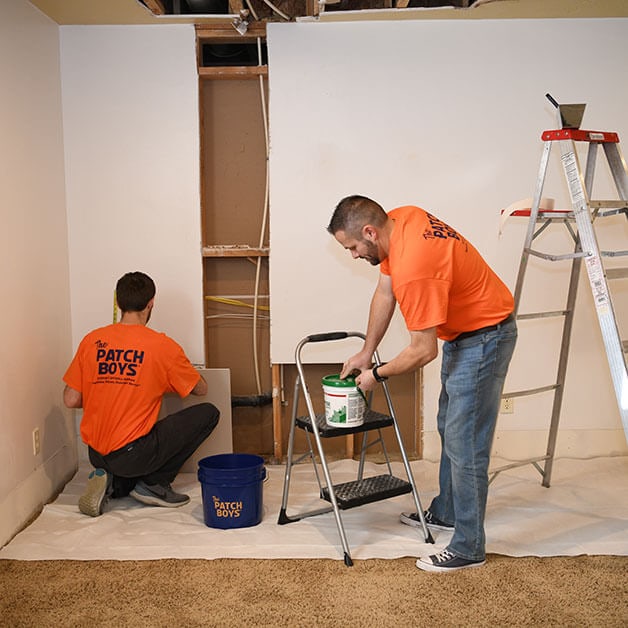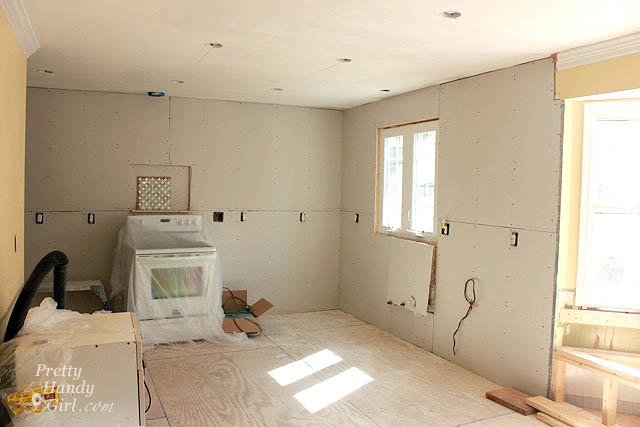Transforming Rooms: The Art of Drywall Edmonton Proficiency
Wiki Article
The Ultimate Step-by-Step Guide to Drywall Installation: From Prep to Painting
Drywall setup is a vital action in any construction or remodelling job, and it needs careful attention to information and exact execution. In this comprehensive overview, we will walk you via each action of the procedure, from the initial preparation to the final painting. From collecting the necessary tools and products to measuring and reducing the drywall panels, we will give you with concise and clear directions to guarantee an effective installment. Yet that's not all-- we will certainly additionally cover the vital actions of securing the panels, ending up the surface areas, and achieving a remarkable paint task. So, whether you're a seasoned do it yourself enthusiast or a novice home owner, this guide is your best resource for attaining expert results.
Gather Necessary Devices and Materials
To begin the drywall installation process, it is necessary to collect all the needed devices and products in a specialist manner. Having the right devices and products not just ensures a effective and smooth installation however likewise contributes to the general high quality and durability of the finished project.First and primary, you will certainly require a tape procedure to precisely gauge the measurements of the ceilings and walls. This will certainly allow you to reduce the drywall sheets to the right dimension, decreasing waste. An utility blade with sharp blades is important for tidy and accurate cuts (drywall repair). Furthermore, a T-square can aid you achieve straight and square cuts.
Following, you will need a cordless drill or screw weapon to secure the drywall sheets to the studs. See to it to have a sufficient variety of drywall screws on hand. These screws ought to be long enough to pass through the drywall and safely anchor it to the studs.
Various other crucial tools consist of a drywall lift or a pair of helping hands to aid with positioning and holding the drywall sheets in place. A drywall T-square can be handy for noting cutting lines, while a rasp or fining sand block will certainly enable you to smooth any type of rough edges.
Last but not least, gather all the essential security equipment, such as shatterproof glass, gloves, and a dust mask, to shield yourself throughout the installation procedure.
Prepare the Workspace
Prior to beginning the drywall installment process, it is critical to appropriately prepare the workplace to make certain a effective and smooth installment. This step is important as it establishes the foundation for the entire job, enabling the setup to continue flawlessly.To begin, it is essential to get rid of the workspace of any furniture, designs, or various other products that might obstruct the setup process. This consists of eliminating wall surface danglings, covering furnishings, and safeguarding the floors with ground cloth or plastic sheets. In addition, guarantee that the location is well-ventilated by opening up home windows or using fans to stop the accumulation of dirt and fumes.
Following, check the wall surfaces and ceilings for any kind of existing damage or abnormalities. Address any kind of concerns such as splits, openings, or irregular surfaces prior to proceeding with the setup. This may include patching up openings, fining sand down harsh locations, or applying a skim layer to even out the surface.
Finally, procedure and mark the layout of the drywall sheets on the ceilings and wall surfaces. This will act as a guide during the installation procedure and aid ensure accurate placement of the panels (drywall contractors). Consider any kind of electrical outlets, switches, or various other components that may require unique focus
Procedure and Cut the Drywall Panels
When working with drywall panels throughout the setup process,Precise measurements and precise cuts are crucial. Before reducing the drywall, it is essential to gauge the measurements of the area where the panels will certainly be mounted. Use a gauging tape to identify the elevation and width of each section, and ensure to make up any type of electrical outlets or components that may call for custom-made cuts.When the measurements are taken, move them onto the drywall panels utilizing a pencil or noting device. Double-check the dimensions to make sure accuracy prior to waging the reducing process. It is advised to use a T-square or straight side to produce straight lines for reducing.

When reducing drywall to protect yourself from particles,Bear in mind to wear safety goggles and dust masks. In addition, it is advisable to have someone assist you in holding the panels during the reducing procedure to make certain stability and accuracy
Install and Secure the Drywall Panels
Appropriate installment and secure add-on of the drywall panels is crucial for a durable and effective finish. To start, thoroughly lift the drywall panel right into area, ensuring it lines up with the marked standards on the wall surface. Beginning from one corner, insert drywall screws right into the panel, driving them with the drywall and right into the wall studs.
Finish and Paint the Drywall Surfaces
To accomplish a specialist and refined coating, the following step after installing and safeguarding the drywall panels is to meticulously complete and repaint the drywall surfaces. Ending up the drywall entails several steps to ensure a smooth and smooth look. Any visible seams or joints between the drywall panels need to be covered with joint compound and tape. This substance is put on the joints, ravelled, and delegated dry. When dry, it is fined sand down to create a seamless surface area. Next, any type of flaws or irregular locations on the drywall are loaded with joint compound and sanded down until smooth. After the drywall is effectively completed, it is time to repaint. Prior to paint, it is necessary to prime the drywall surface areas to make sure appropriate bond and a smooth surface. Once the guide is completely dry, the drywall can be repainted utilizing a roller or brush, depending upon the wanted coating. Numerous coats may be essential to attain the wanted color and protection. It is very important to allow each coat to completely dry before using the next. Once the paint is dry, the drywall surfaces are prepared to be appreciated.Conclusion

From gathering the needed tools and materials to determining and reducing the drywall panels, we will supply you with concise and clear guidelines to make sure an effective setup.Accurate dimensions and accurate cuts are vital when working with drywall panels throughout the installment procedure.Proper installment and safe and secure add-on of the drywall panels is crucial for a long lasting and effective coating. Starting from one edge, insert drywall screws right into the panel, driving them via the drywall and into the wall studs.To achieve a refined and specialist coating, the next action after installing and protecting the drywall panels is to carefully finish and repaint the drywall surface areas.
Report this wiki page